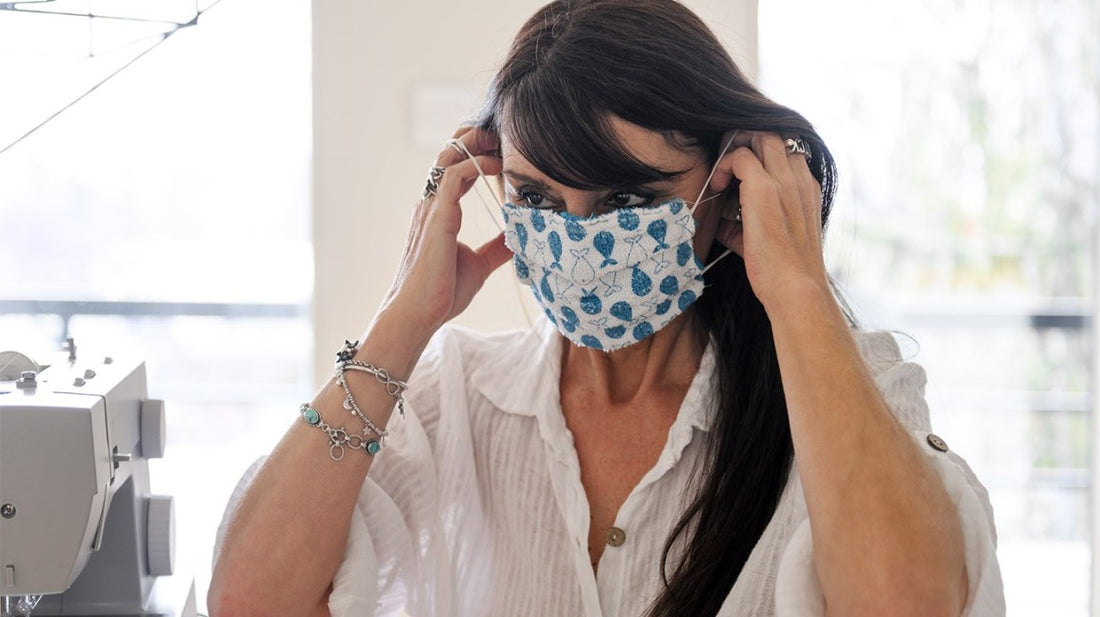Medical masks should be reserved for health care workers.
The use of medical masks in the community may create a false sense of security, with neglect of other essential measures, such as hand hygiene practices and physical distancing, and may lead to touching the face under the masks and under the eyes, result in unnecessary costs, and takemasks away from those in health care who need them most, especially when masks are in short supply. Persons with symptoms should: • wear a medical mask, self-isolate, and seek medical advice as soon as they start to feel unwell. Symptoms can include fever, fatigue, cough, sore throat, and difficulty breathing. It is important to note that early symptoms for some people infected with COVID-19 may be very mild; • follow instructions on how to put on, take off, and dispose of medical masks; • follow all additional preventive measures, in particular, hand hygiene and maintaining physical distance from other persons.
All persons should:
• avoid groups of people and enclosed, crowded spaces; • maintain physical distance of at least 1 m from other persons, in particular from those with respiratory symptoms (e.g., coughing, sneezing); • perform hand hygiene frequently, using an alcohol-based hand rub if hands are not visibly dirty or soap and water when hands are visibly dirty; • cover their nose and mouth with a bent elbow or paper tissue when coughing or sneezing, dispose of the tissue immediately after use, and perform hand hygiene; • refrain from touching their mouth, nose, and eyes.
In some countries masks are worn in accordance with local customs or in accordance with advice by national authorities in the context of COVID-19. In these situations, best practices should be followed about how to wear, remove, and dispose of them, and for hand hygiene after removal.
Advice to decision makers on the use of masks for healthy people in community settings
As described above, the wide use of masks by healthy people in the community setting is not supported by current evidence and carries uncertainties and critical risks. WHO offers the following advice to decision makers so they apply a risk-based approach.
Decisions makers should consider the following:
1. Purpose of mask use:
the rationale and reason for mask use should be clear– whether it is to be used for source control (used by infected persons) or prevention of COVID-19 (used by healthy persons)
2. Risk of exposure to the COVID-19 virus in the local context: The population: current epidemiology about how widely the virus is circulating (e.g., clusters of cases versus community transmission), as well as local surveillance and testing capacity (e.g., contact tracing and follow up, ability to carry out testing). The individual: working in close contact with public (e.g., community health worker, cashier)
3. Vulnerability of the person/population to develop severe disease or be at higher risk of death, e.g. people with comorbidities, such as cardiovascular disease or diabetes mellitus, and older people
4. Setting in which the population lives in terms of population density, the ability to carry out physical distancing (e.g. on a crowded bus), and risk of rapid spread (e.g. closed settings, slums, camps/camp-like settings).
5. Feasibility: availability and costs of the mask, and tolerability by individuals
In addition to these factors, potential advantages of the use of mask by healthy people in the community setting include reducing potential exposure risk from infected person during the “pre-symptomatic” period and stigmatization of individuals wearing mask for source control.
However, the following potential risks should be carefully taken into account in any decision-making process:
• self-contamination that can occur by touching and reusing contaminated mask
• depending on type of mask used, potential breathing difficulties • false sense of security, leading to potentially less adherence to other preventive measures such as physical distancing and hand hygiene
• diversion of mask supplies and consequent shortage of mask for health care workers
• diversion of resources from effective public health measures, such as hand hygiene
Whatever approach is taken, it is important to develop a strong communication strategy to explain to the population the circumstances, criteria, and reasons for decisions. The population should receive clear instructions on what masks to wear, when and how (see mask management section), and on the importance of continuing to strictly follow all other IPC measures (e.g., hand hygiene, physical distancing, and others).


